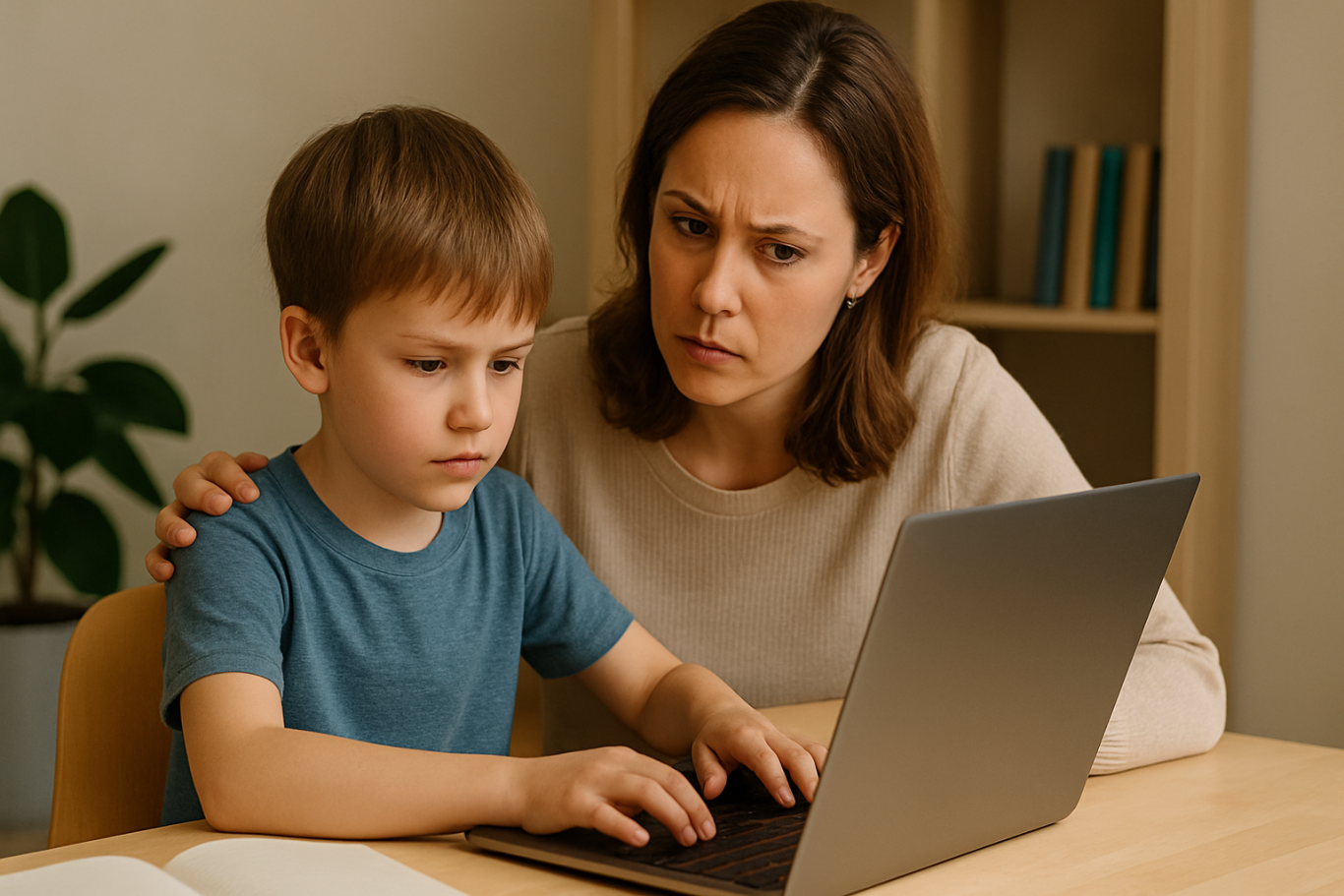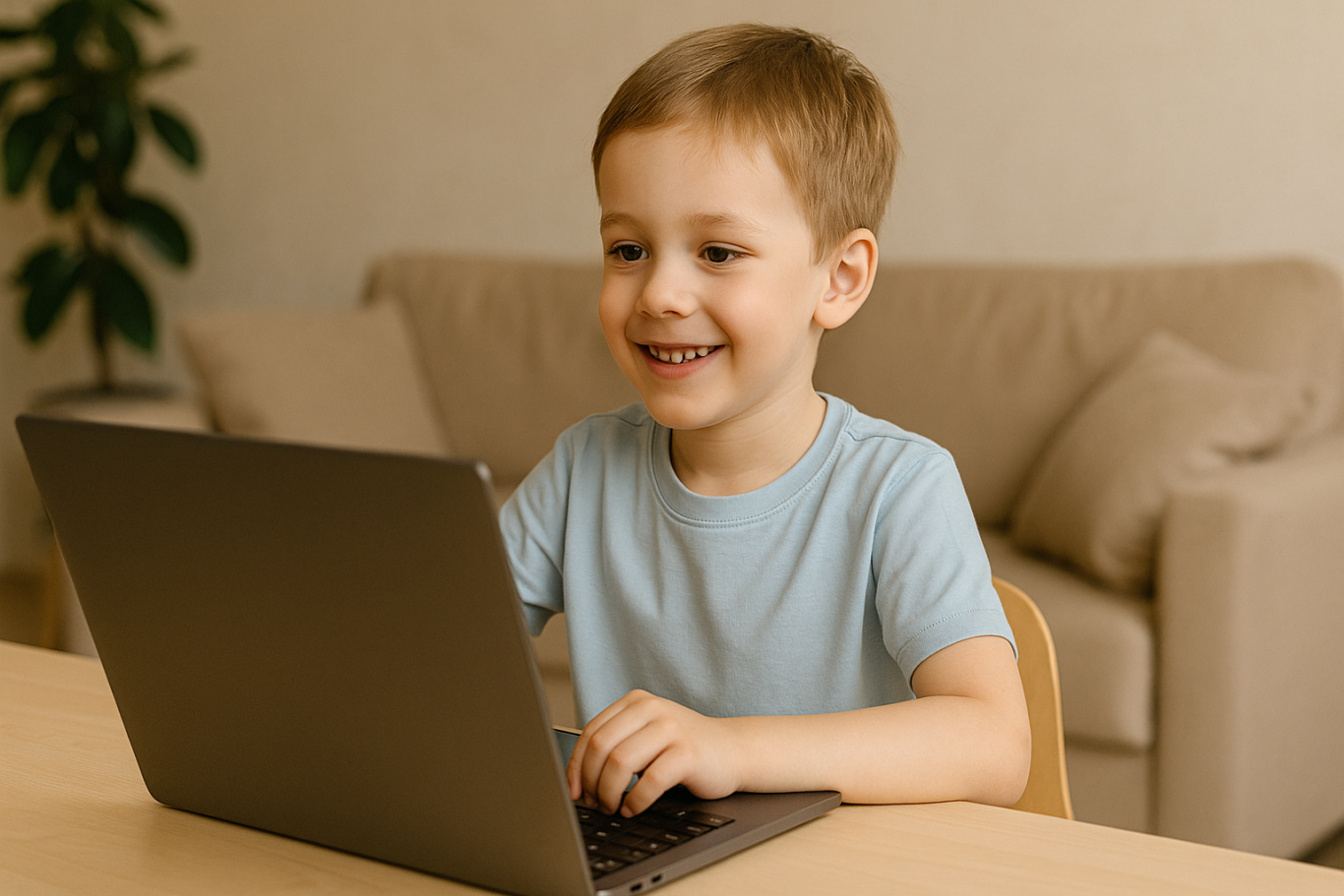Best Age for Kids to Use Laptops: What Age Can Kids Start Using Laptops for Learning?
Technology has brought many changes to education, including how children learn. Nowadays, laptops and tablets have become common learning tools. However, many parents still wonder: what is the best age for kids to use laptops, and at what age can kids start using laptops safely and effectively?
This article provides a guide on the right age for children to start using laptops for learning, the benefits and challenges to consider, and tips to help ensure laptop use supports their development in the best way possible.
Why Is It Important to Consider Age When Letting Kids Use Laptops?

Laptops and other digital devices make learning easier with wide access to information, interactive educational apps, and fast communication tools. However, early and unsupervised use of technology can pose risks like eye strain, posture problems, and screen dependency.
That’s why parents need to know the best age for kids to use laptops so the benefits are maximized without compromising their health and social development. Choosing the right time also helps kids be mentally and cognitively ready to handle technology in a healthy way.
So, What Age Can Kids Start Using Laptops?

There’s no strict rule because every child develops differently. But experts generally recommend:
- Under 2 years old: Avoid screen time including laptops and tablets, since brain development at this age depends heavily on direct physical and social interaction.
- Ages 2–5: Limit screen time to no more than 1 hour per day, and use devices only with educational content supervised by parents.
- 6 years and older: Kids can start using laptops for learning for longer periods, but with clear time limits and adult supervision.
So, the age when kids can start freely using laptops for learning is usually around elementary school age—starting from 6 years old—with guidance and rules in place.
Benefits of Using Laptops for Kids’ Learning

Using laptops appropriately by age and need offers many benefits, including:
- Access to Diverse Learning Resources: Kids can explore a variety of online sources like educational videos, e-books, and interactive apps.
- Development of Digital Skills: In today’s digital world, knowing how to use technology is a crucial skill that should be developed early.
- Boosting Creativity and Independence: Children can create digital projects like drawings, videos, or basic coding that stimulate creativity.
- Ease of Communication and Collaboration: Laptops enable kids to communicate easily with teachers and classmates, especially in remote learning.
Challenges and Risks of Laptop Use for Kids

Despite the benefits, parents should be aware of some risks:
- Excessive Screen Time: Can cause eye fatigue, sleep disturbances, and other health issues.
- Poor Posture: Long use without ergonomic setups can lead to neck and back pain.
- Social and Emotional Issues: Dependence on devices may reduce social interaction and physical activity.
- Inappropriate Content: Kids might access unsuitable material without supervision.
Tips for Choosing the Best Age for Kids to Use Laptops Safely
To ensure positive laptop use, consider these tips:
- Start Slowly and Gradually: Adjust laptop time based on your child’s age and focus capacity.
- Monitor and Supervise: Always stay with your child while they use the laptop, especially when young.
- Choose Educational Content: Make sure apps and websites are age-appropriate and support learning.
- Set Up Proper Posture and Breaks: Provide ergonomic seating and regular rest periods.
- Set Rules and Schedules: Agree on time limits to prevent overuse.
Supporting Your Child’s Tech Learning Journey
To help your child use technology effectively and appropriately, besides knowing the best age for kids to use laptops, it’s important to introduce fun and age-appropriate coding lessons. Timedoor Academy offers specially designed coding programs for kids, with easy-to-understand and engaging methods.

Ingin tahu detail program?
Don’t hesitate to try it out, because Timedoor Academy also provides free trial classes that let parents and children explore coding without pressure before committing fully. This is a great first step to support your child’s digital development for the future.
Best Age for Kids to Use Laptops and When It’s Appropriate
Determining the best age for kids to use laptops and when they can safely start isn’t just about numbers, but also about the child’s mental, physical, and social readiness. Generally, elementary school age is an ideal time to begin using laptops as learning tools, with supervised and limited use.
Healthy and purposeful laptop use opens up many learning opportunities and helps develop essential skills in the digital age. Therefore, parents should actively guide and regulate technology use so it supports their child’s overall growth.